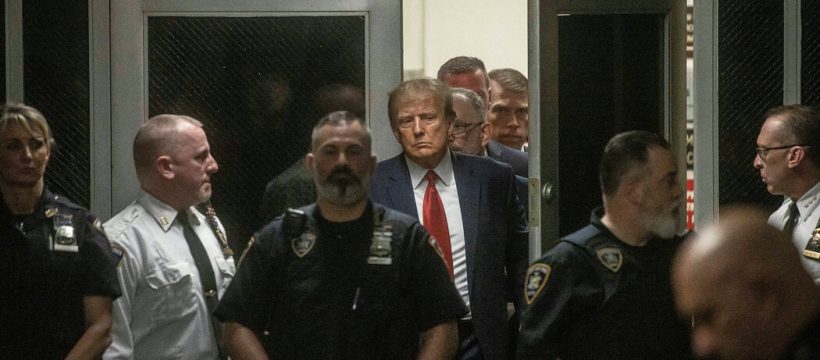The ex-president’s indictment put him in the rare position of being forced onto on a public stage not of his own choosing.
Send any friend a story
As a subscriber, you have 10 gift articles to give each month. Anyone can read what you share.
By James Poniewozik
The Manhattan Criminal Courthouse hallway was not the sort of stage that Donald J. Trump would have handpicked for himself.
As tabloid figure, reality-TV star and president, Mr. Trump always paid close attention to his set dressing. With an instinct for the camera, he preferred settings that conveyed grandeur and lent him an aura of power, be they the made-for-TV boardroom of “The Apprentice,” the Trump Tower escalator at his 2015 campaign announcement or the church on Lafayette Square where he held a photo-op after police tear-gassed protesters.
The hallway outside the courtroom where Mr. Trump became the first former president to be criminally indicted was no glitzy platform. The floors were scuffed and the walls drab. The camera focused on a pair of safety-glass double doors, reflecting red “EXIT” signs, through which a glum-looking Mr. Trump passed on his way to his arraignment. The scene was gray, humdrum, municipal, more “Night Court” than Supreme Court. You could practically smell the vending-machine coffee.
The result made visually real what had become a cliché in the case: No one was above the law. Mr. Trump was right there in the law’s nondescript belly (despite the special accommodations that went into his arraignment). In still courtroom images instantly plastered on screens, he sat in the dock like any other defendant, slumped, watched by court guards.
It was an unprecedented sight, a former president being arrested and charged. But as the camera framed him, he was just a guy from Queens waiting to hear from the judge.
Source: Read Full Article


